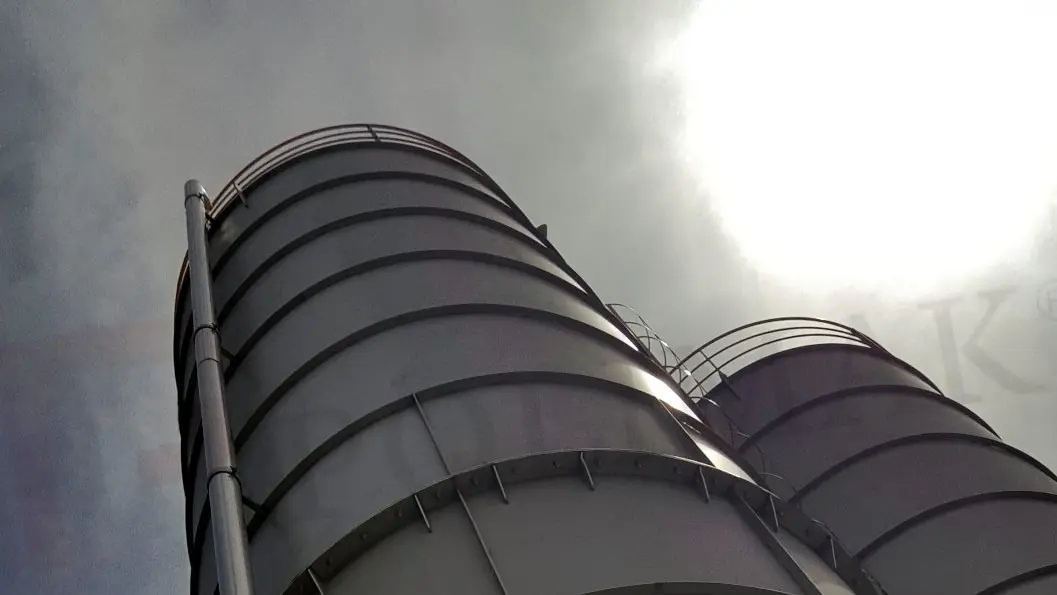Discharge to Pneumatic Conveying Line
Discharging from bulk bags directly into pneumatic conveying systems is ideal for facilities requiring rapid, dust-free transfer of powders or granules across longer distances. This method enables fully enclosed material handling, often used in cleanroom environments or for flammable materials.

How the System Operates
- Bag Loading: The big bag is installed over a sealed hopper connected to the conveying line.
- Airlock Feeding: A rotary valve or screw feeder transfers material into the pneumatic line at a controlled rate.
- Conveying: The material is moved through the pipeline using positive or negative pressure (vacuum or pressure conveying).
- Discharge Point: Bulk material is delivered to receiving equipment such as silos or packaging stations.

Key Components
- Airtight Discharge Hopper: Prevents material leakage and supports connection to conveying line.
- Feeder Valve: Rotary or screw feeder ensures consistent flow into the pneumatic system.
- Dust Filter/Receiver: Captures fine particles at discharge end and returns air to system.
- Blower or Vacuum Pump: Drives the pneumatic movement of material through the conveying system. It creates the necessary airflow or suction to transport powders or granules efficiently from the discharge point into the silo, ensuring smooth, dust-free transfer and minimizing material loss.

Benefits and Key Advantages
• Long-Distance Transfer: Ideal for large-scale facilities where processing zones are located in separate zones. Pneumatic conveying allows buk materials to be transported efficiently over long distances without the need for multiple intermediate handling steps or manual transfer.
• Clean Operation: The fully enclosed pneumatic system minimizes dust emissions, reduces product loss, and protects operators from exposure to fine particles. This mechanism provides a cleaner, safer work environment and helps maintain product quality, especially in hygiene-sensitive industries.
• Space-Saving: Flexible pipe routing enables the system to navigate around obstacles and fit within tight spaces, eliminating the need for bulky mechanical conveyors or elevators. This system is preferred in fitting into existing plant layouts where floor space is limited.
• Integration Ready: Pneumatic conveying systems can be easily integrated with automated batching, weighing, or mixing processes. This seamless integration supports efficient material flow, improves process control, and enhances overall plant automation and productivity.

Industry Applications
• Pharmaceutical & Food: The system conveys sensitive materials like active pharmaceutical ingredients, milk powder, or sugar into mixers or reactors in a hygienic manner. Systems are designed with sanitary components to prevent contamination and ensure compliance with strict hygiene standards.
• Chemicals: Used for transferring fine, potentially hazardous powders such as carbon black, titanium dioxide, or silica. ATEX-certified equipment ensures safe handling in explosive or reactive environments, minimizing risk to both product and personnel.
• Plastics: The system efficiently feeds materials like plastic granules, resins, or additives into molding or processing machines. The enclosed system eliminates manual handling, reduces contamination, and supports consistent material flow.
• Construction Materials: Handles the transfer of bulk powders like cement, lime, or fly ash into silos or mixing stations. The closed conveying system minimizes dust emissions and supports continuous, high-volume operations in rugged environments.
• Agriculture: Transports dry agricultural products such as grains, feed, or powdered additives into storage silos or blending systems. Pneumatic conveying reduces spillage and helps maintain product quality during handling and storage.